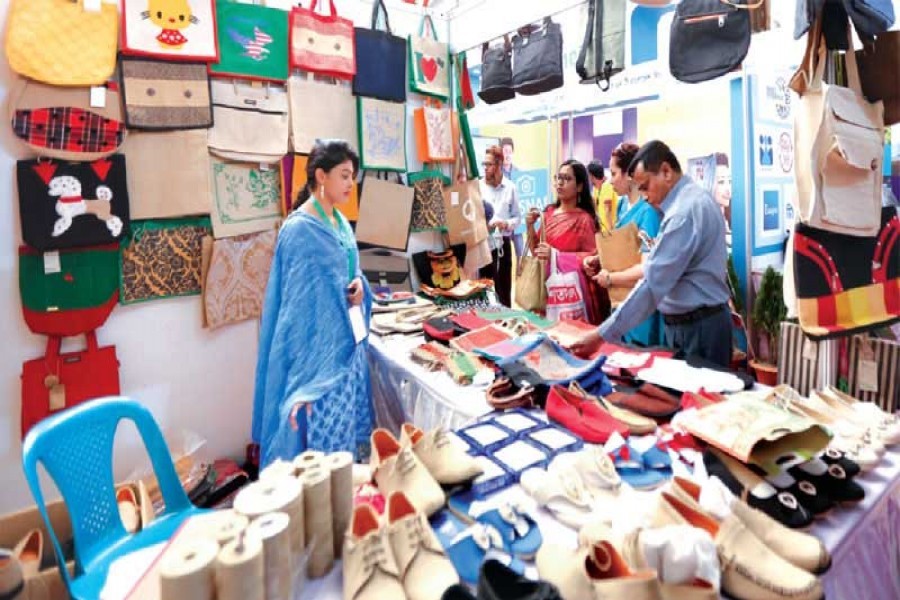With more than 50 per cent of the country's small enterprises reportedly shut, there is a growing discontent among stakeholders and respective trade and industry associations as to whether the government's plans to revamp the huge and largely disorganised SME sector comprising scores of sub-sectors would bring the intended benefit.
Entrepreneurs and experts the other day urged the government to develop a new mechanism for lending low-cost bailout packages among small and medium enterprises as the traditional banking system has failed to cater to unbanked small enterprises. They made the observations at a virtual dialogue, titled "Covid-19 Economic Crisis and SMEs of Bangladesh". The event was organised by Business Initiative Leading Development (BUILD), a research organisation of the Dhaka Chamber of Commerce and Industry (DCCI).
One of the key issues that was emphasised in the event was easing access to the government announced stimulus package to ensure support for all small and medium enterprises (SMEs), especially the small and informal ones. The participants said cottage, micro, small and medium enterprises (CMSMEs) are the worst sufferers of the Covid-19 pandemic. The majority of them, especially the ones in the informal sector, are not getting access to the support because of failure to meet the conditions, absence of formal banking transactions and guarantee. They called for an innovative and holistic approach for tackling regulatory issues, enabling easier access to finance, and recognising the challenges of the 21st century business landscape to overcome the hurdles related to economic impacts among Bangladeshi SMEs due to the pandemic.
There are wide differences between small and medium enterprises in terms of business scale as well as in the definition of SMEs. Hence if the same policies are considered for both small and medium entrepreneurs while disbursing stimulus funds, small entrepreneurs will be left out of the package. "We should think about the entrepreneurs who cannot avail banking channels. We should develop a new model so that we can reach entrepreneurs at union levels, those who have never borrowed from banks", said an entrepreneur. Ferdaus Ara Begum, CEO of BUILD said, "Some of the conditions in the traditional lending system are very stringent for SMEs, especially for those who are not under the fold of the banking system. For ensuring access to credit, there is a need to frame a separate policy and credit guarantee scheme for these unbanked small entrepreneurs."
The central bank has issued a guideline for disbursing Tk 200 billion to micro, small, medium enterprises (MSMEs) including cottage industries, as announced by the government, to boost production and overcome the COVID-19 impacts on them. The stimulus, a loan package and despite the government's sharing of 5.0 per cent of the 9.0 per cent interest rate, is quite challenging to implement.
As per the central bank's guideline, commercial banks and financial institutions will provide loans or investment facilities to the enterprises as working capital from their own fund on the basis of bank-client relations. The banks will have to disburse a minimum of 15 per cent of their yearly loan targets to businesses in villages and marginal areas from the stimulus package. The interest rate of this lending facility will be 9.0 per cent and the concerned industries and business organisations will pay 4.0 per cent, while the government will provide the remaining 5.0 per cent as subsidy, the guideline said. It further adds that banks will have to provide 70 per cent loans of their yearly target to the cottage, micro and small enterprises while the rest 30 per cent should be provided to the medium enterprises.
Reading between the lines, one finds a few deterrents that may pose difficulties to address, despite the good intent of the government. First, for a mammoth sector like the MSMEs, need-based distribution of fund is not easy. Second, and indeed the most impeding factor likely to affect implementation of the package is the so-called bank-client relations. No wonder, the foremost concern for the banks would be recoverability of the loans-- however low the rate of interest. Third, identifying the enterprises, especially the micro and small enterprises, may be rather difficult to work out. It is not known whether the central bank has categorised the sectors and sub-sectors in terms of their yearly turnover or not. Tracing the affected enterprises or SME entrepreneurs remains a big problem. Stakeholders at the programme called for a central database where there would be available information about the sector.
Observers feel that instead of just mentioning small and micro units for eligibility of loans, the guidelines should have spelt out the sub-sectors, prioritising them on the basis of their importance to the national economy in terms of productivity and employment generation. There is an apprehension that micro, small and cottage industries might be left out of the benefit unless the central bank stipulates in very clear terms the eligibility criteria based on their productivity, mode of operation, and marketing networks. Otherwise, medium enterprises, definition of which is rather vague, may consume bulk of the benefits.


